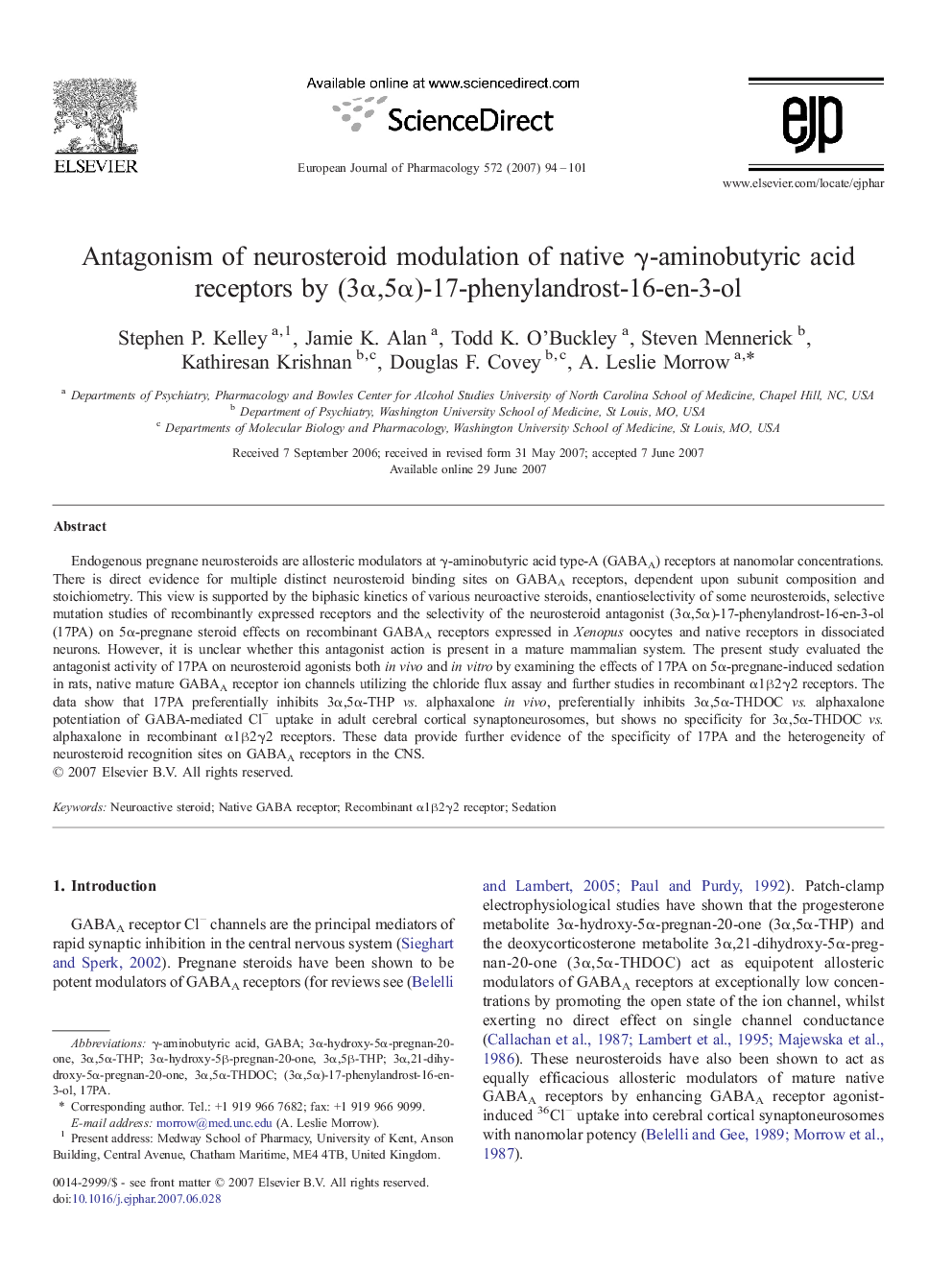| Article ID | Journal | Published Year | Pages | File Type |
|---|---|---|---|---|
| 2535764 | European Journal of Pharmacology | 2007 | 8 Pages |
Endogenous pregnane neurosteroids are allosteric modulators at γ-aminobutyric acid type-A (GABAA) receptors at nanomolar concentrations. There is direct evidence for multiple distinct neurosteroid binding sites on GABAA receptors, dependent upon subunit composition and stoichiometry. This view is supported by the biphasic kinetics of various neuroactive steroids, enantioselectivity of some neurosteroids, selective mutation studies of recombinantly expressed receptors and the selectivity of the neurosteroid antagonist (3α,5α)-17-phenylandrost-16-en-3-ol (17PA) on 5α-pregnane steroid effects on recombinant GABAA receptors expressed in Xenopus oocytes and native receptors in dissociated neurons. However, it is unclear whether this antagonist action is present in a mature mammalian system. The present study evaluated the antagonist activity of 17PA on neurosteroid agonists both in vivo and in vitro by examining the effects of 17PA on 5α-pregnane-induced sedation in rats, native mature GABAA receptor ion channels utilizing the chloride flux assay and further studies in recombinant α1β2γ2 receptors. The data show that 17PA preferentially inhibits 3α,5α-THP vs. alphaxalone in vivo, preferentially inhibits 3α,5α-THDOC vs. alphaxalone potentiation of GABA-mediated Cl− uptake in adult cerebral cortical synaptoneurosomes, but shows no specificity for 3α,5α-THDOC vs. alphaxalone in recombinant α1β2γ2 receptors. These data provide further evidence of the specificity of 17PA and the heterogeneity of neurosteroid recognition sites on GABAA receptors in the CNS.
